NatureZen: Beyond April Fool’s
NatureZen: Beyond April Fool’s
words and photos by Melissa McMasters
April Fool’s Day, along with warmer weather, has me thinking about all the creatures I run across that are using deception as a part of their daily lives. So even though April 1 has come and gone, I wanted to celebrate some insects who are fooling us—and their predators—by using two different kinds of evolutionary tricks: camouflage and mimicry.
Camouflage
Camouflage is meant to hide an organism from predators. It allows the creature to blend into its environment, either by naturally looking like elements of that environment, or by changing colors to blend in with its current surroundings.
Stick insects are classic examples of camouflage. Not only do they resemble twigs visually, but they also move like them, sometimes walking in a swaying motion to look like sticks blowing in the wind.
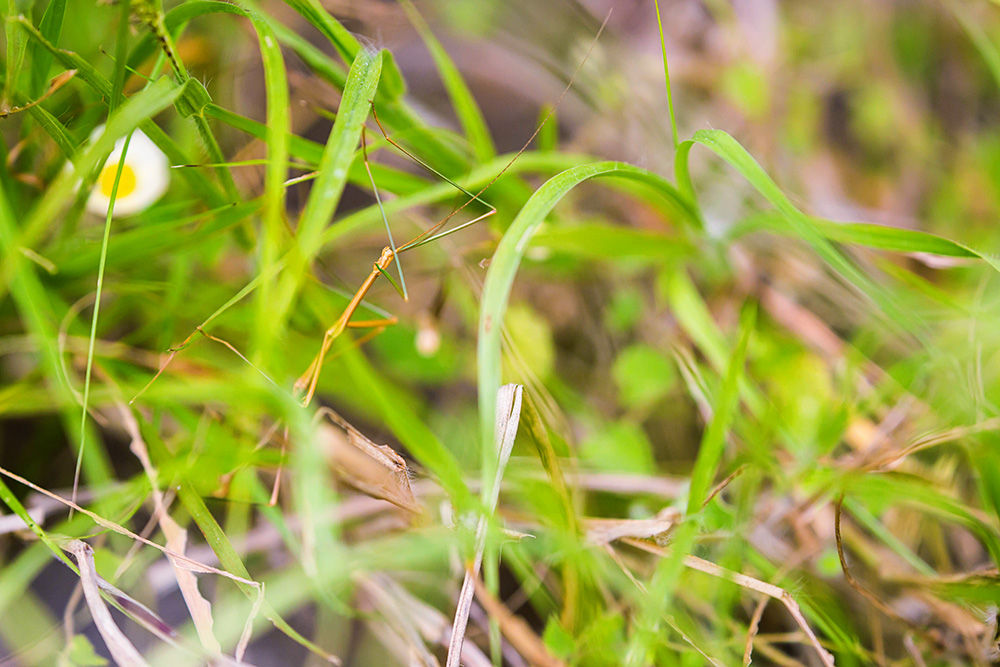
The Texas unicorn mantis has a body that resembles a weathered stick and green wings that look like a leaf, complete with spots! I like to think the unicorn horn(s) are just to be fancy.
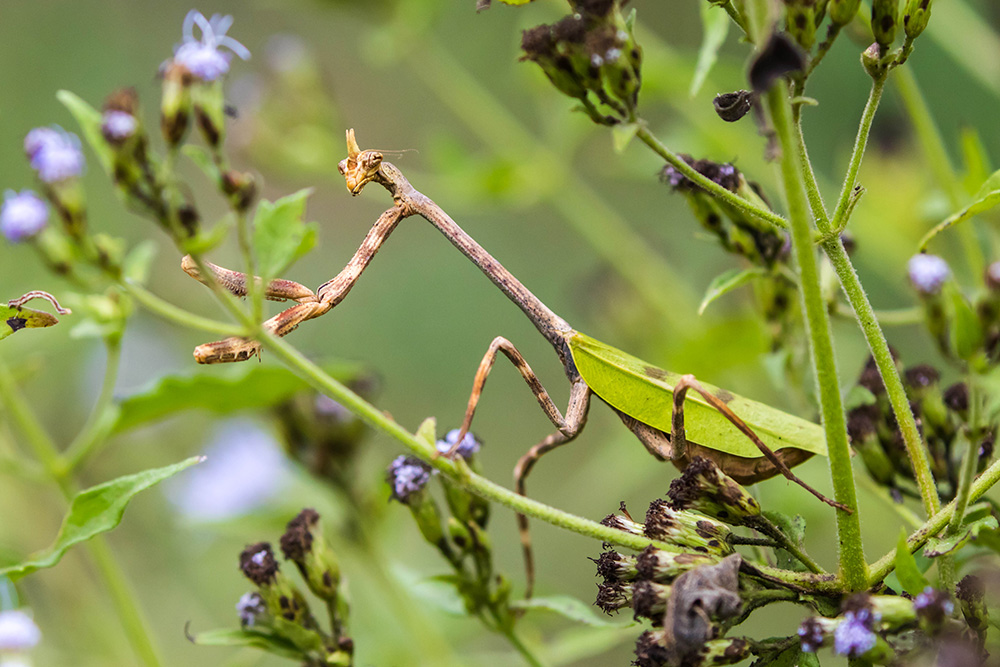
Moths are masters of this strategy. (In fact, we once devoted a whole edition of NatureZen to moth camouflage.) Day-flying moths are at major risk of being spotted and consumed, so over time their colors and patterns have evolved to look like the places they live.
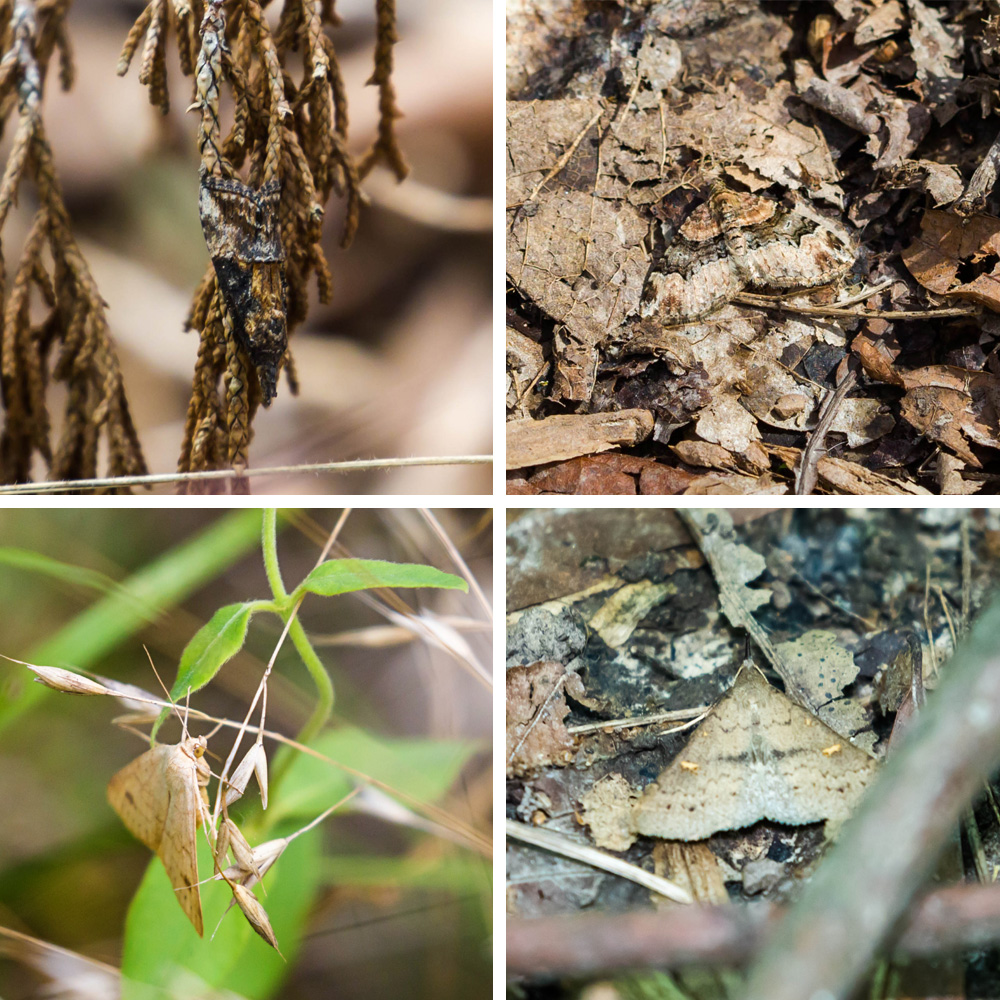
Mimicry – Batesian Mimics
Unlike camouflage, mimicry is meant to call attention to an insect, for the purposes of discouraging a predator. The type of mimicry most of us are probably familiar with is Batesian mimicry, in which a harmless creature takes on the appearance of a dangerous or unpleasant one to discourage predators. (Think of it as a sheep in wolf’s clothing.) In this scenario, a predator learns from the experience of being attacked by the harmful insect (or finding it unpleasant to eat), and avoids anything that looks like that creature.
Only one of these four insects can sting. Can you tell which one just by looking?
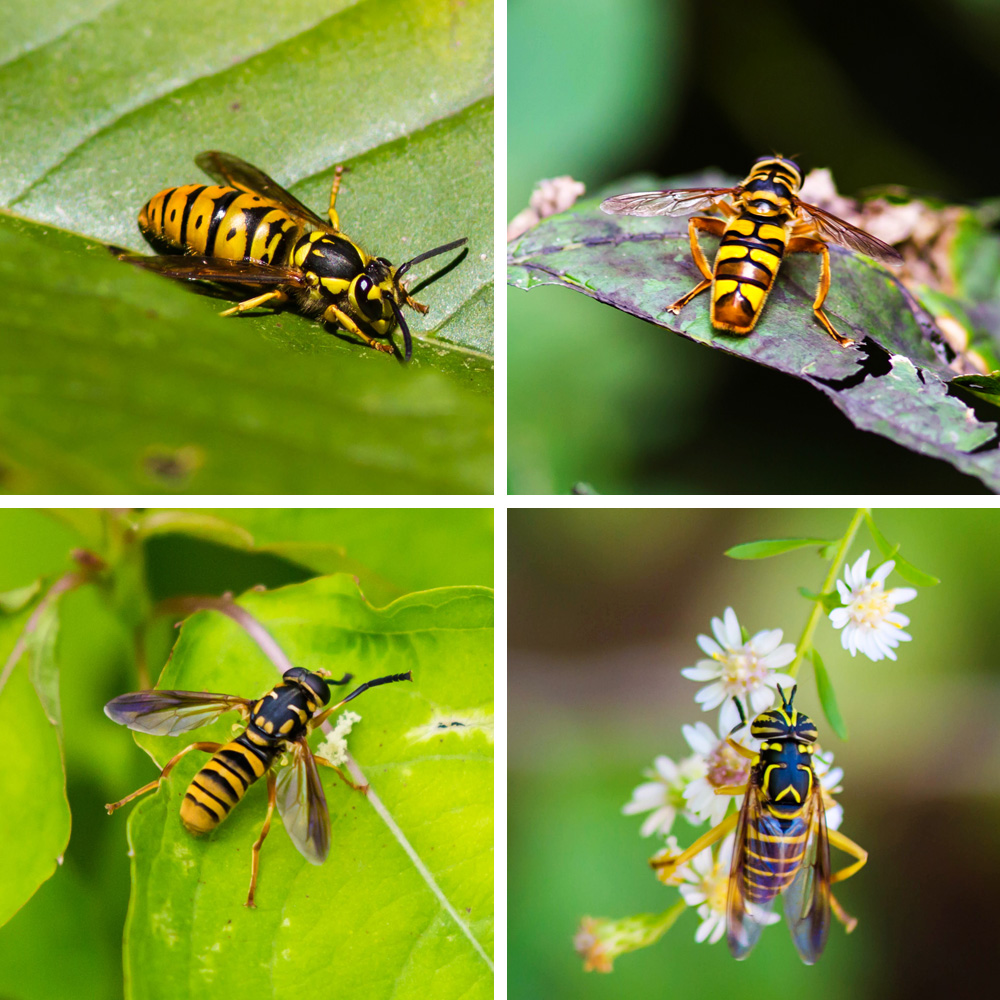
Although these four insects are roughly the same size, and all show bold black and yellow/orange color patterns, only the yellowjacket (top left), a type of wasp, can cause harm. The other three are hover flies, which lack stingers entirely. Note the short antennae on the fly species, and especially on the bottom left individual. This fly is part of a group called falsehorns; their two front legs are black, and they frequently hold them in an elevated position to mimic the yellowjacket’s long black antennae. Their own antennae are short and golden!
Flies in general are big proponents of the Batesian mimicry strategy. Below you’ll see two bees on the left: the American bumble bee and the Western honey bee. To the right are some very effective but harmless imposters. The bumble bee’s mimic is a robber fly, which is using its disguise two ways: to avoid becoming lunch, and to trick the smaller insects it feeds on into thinking it’s a bumble bee that only wants to drink nectar. (Note the fly’s shorter antennae and its red feet.) The honey bee’s mimic is the common drone fly; both are pollinators native to Europe that have been widely introduced to the United States.

Flies aren’t the only ones dressing up as wasps. Velvet ants are a group of wasps who themselves look so much like ants that they’re named for them. These wasps have powerful stings, and a wide variety of imitators including some spiders. One of my favorite velvet ant mimics is this checkered beetle on the right, whose color patterns are quite similar to the wasp on the left. Female velvet ants have no wings, but they’re the ones who sting. So this beetle, which has hard wing covers that blend into its abdomen visually, is advertising a weapon it’s not actually packing!
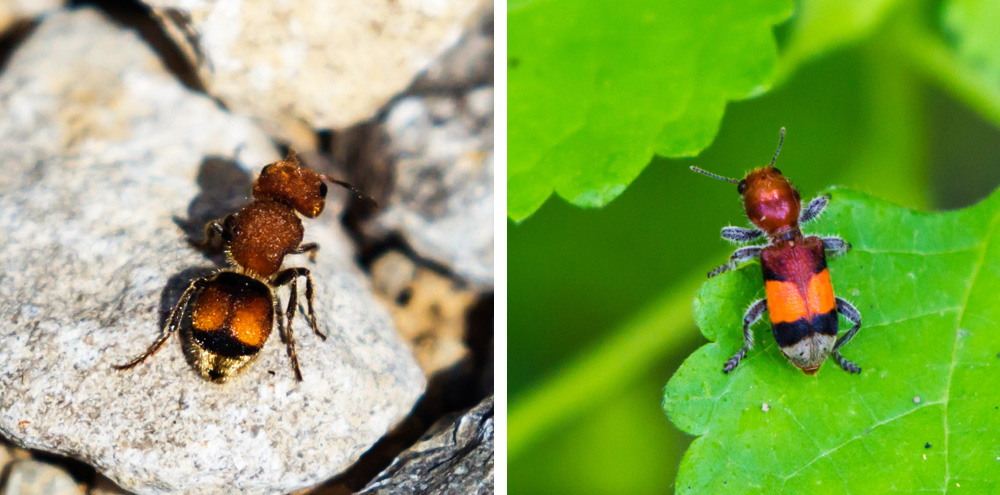
Mimicry – Müllerian Mimics
Finally for today, we have Müllerian mimics, groups of organisms that save themselves work by presenting a common front of undesirability to predators. Let’s visualize what this scenario might look like for humans:
Say you live on the top floor of a tall apartment building. One day, you’re in the lobby with an armload of groceries, waiting for the elevator with a woman in a silver sequined jacket. When you get into the elevator, you press the top button, and the woman proceeds to press every other button, so that you’re forced to stop on every floor and wait. You write her off as a very petty individual and move on with your day. Next time you come home with groceries, there’s a different lady in a different sequined jacket—still silver, but maybe this one has pockets. You hop in, push your button…and she ALSO makes you stop on every floor! Now it’s a pattern. These ladies are teaching you that they want to ride the elevator alone, and you should wait for the next one. But after you, the predator of their privacy, have detected this pattern and chosen to let them ride alone, each sequined lady is doing a lot less work to keep you away from them. Their shiny signals have been effective!
One classic example of Müllerian mimicry is the monarch and the viceroy. Growing up, many of us were taught that only monarchs tasted foul to predators, and that viceroys were plenty delicious (and therefore using Batesian mimicry). Turns out viceroys may in fact be even less tasty than monarchs!
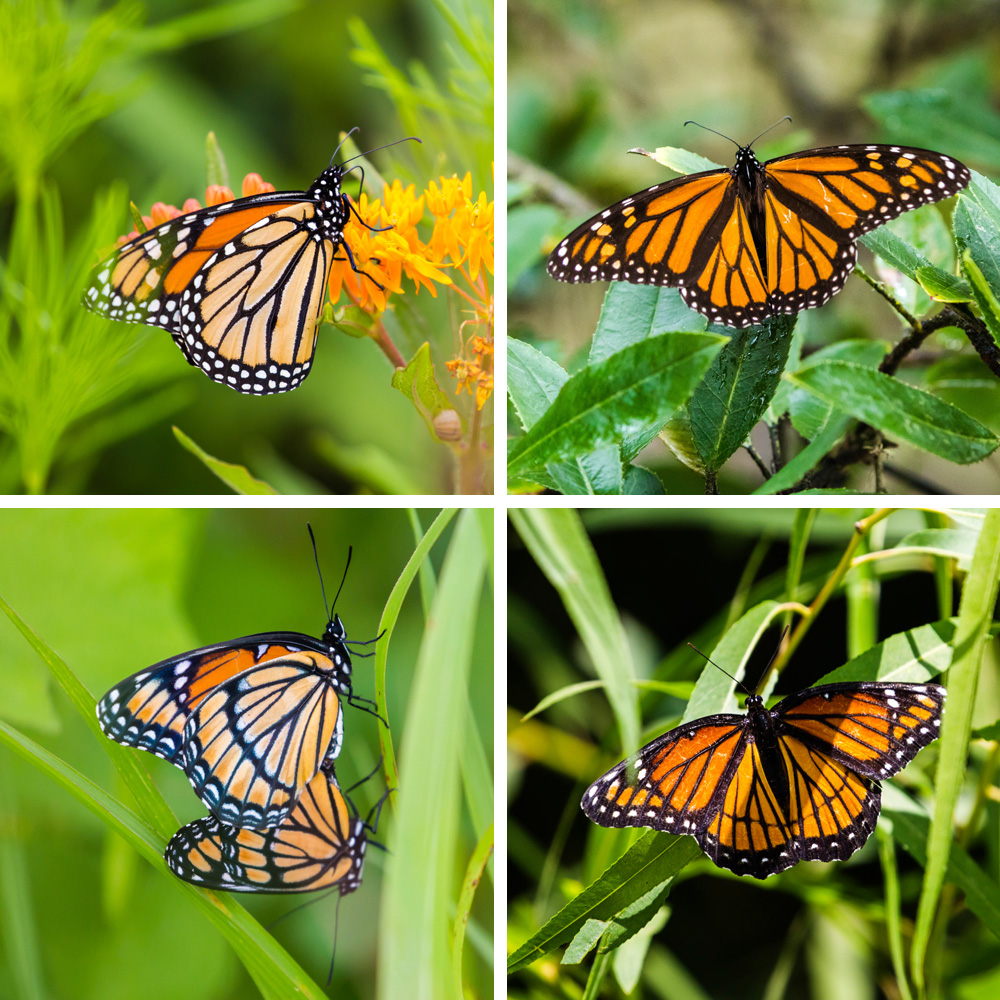
Many species that use this kind of mimicry form “rings” in their geographic areas, where multiple species show the same basic color pattern. Most famously, there are nearly a dozen heliconian butterflies in Central and South America that look alike at a glance (and even at a long, long look). They use the pollen they eat to produce cyanide compounds that make them unpalatable to predators. Turns out their similar color patterns are not just designed to frustrate the amateur naturalist…imagine that!
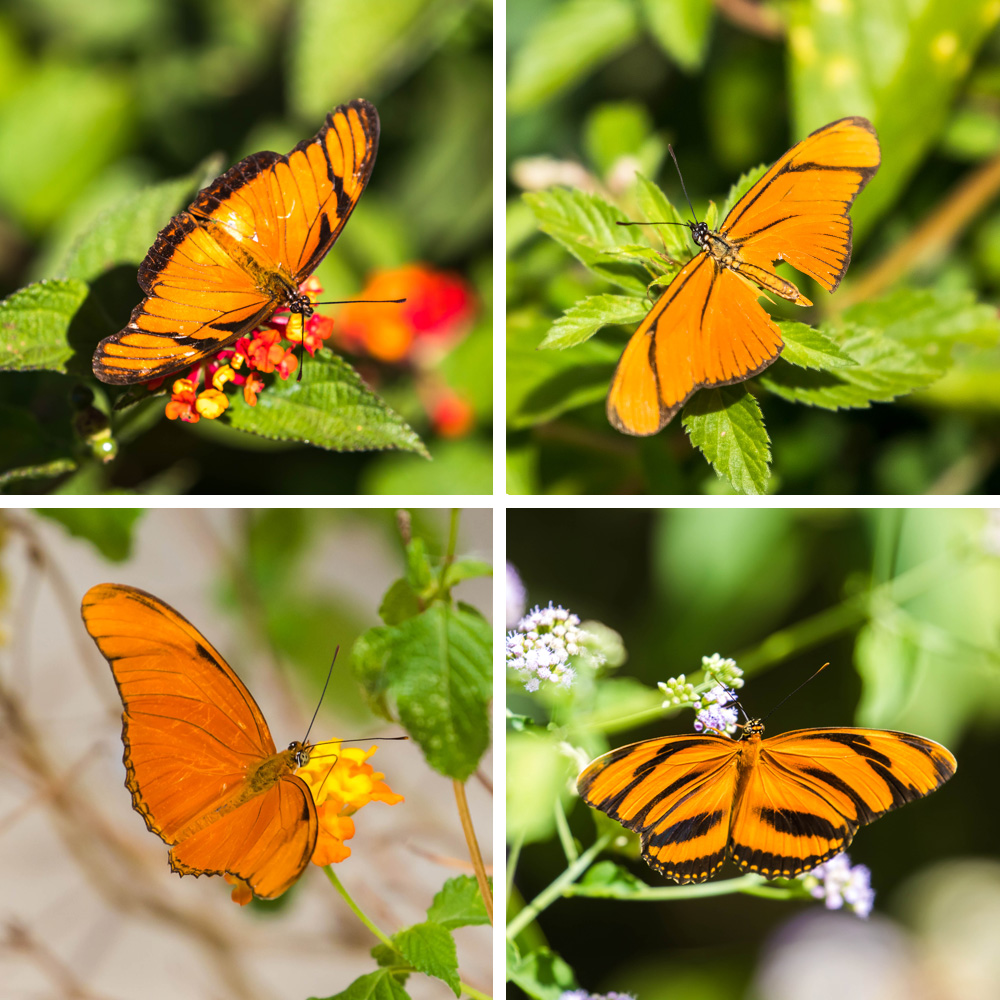
Researchers have identified five distinct regional mimicry rings for North American bumble bees, based on their color patterns. Many of the familiar species in our part of the country are part of the Eastern yellow mimicry ring, with eight species that have a half-yellow (mainly the thorax) and half-black (mainly the abdomen) appearance. Can’t tell one bee apart from another? You’re in good company (the company of everything that eats bees).
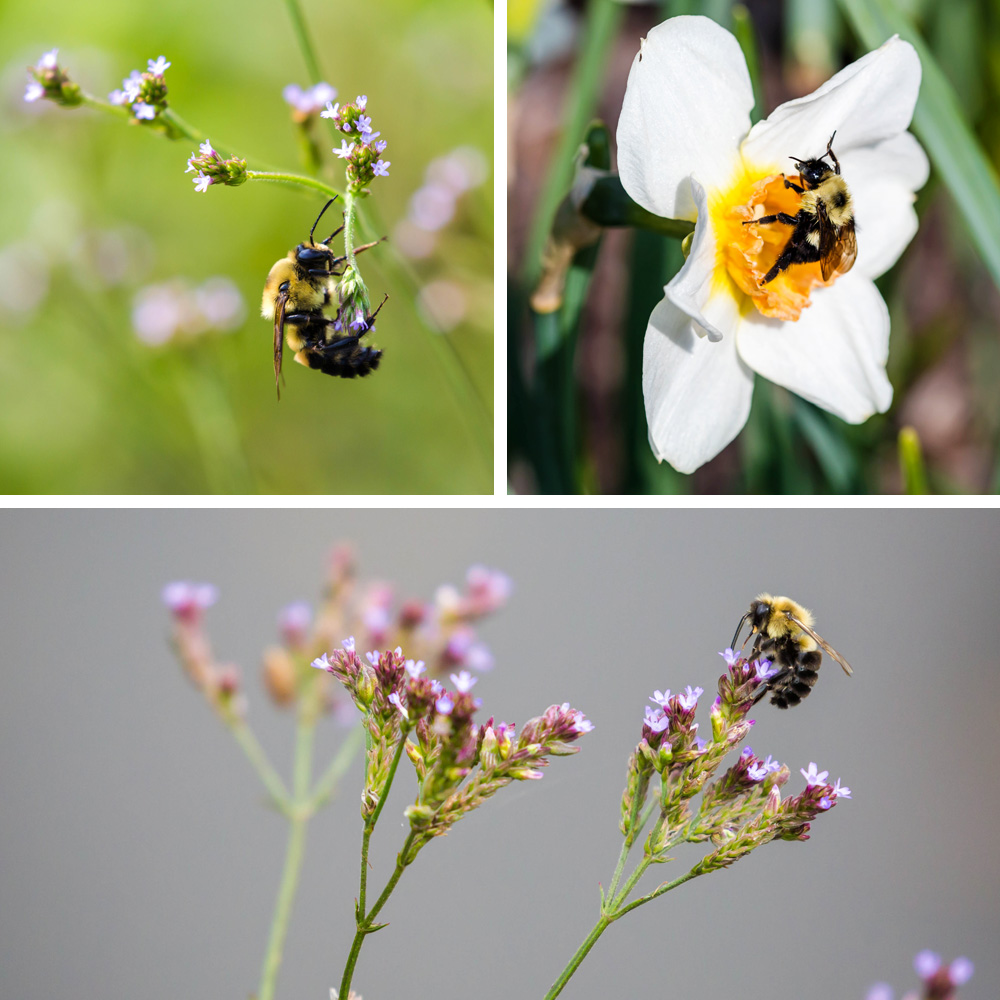
These are only a few ways animals fool each other (and us). If you’re feeling duped, just remember: this means there are probably a lot fewer stinging wasps out there than you thought!



